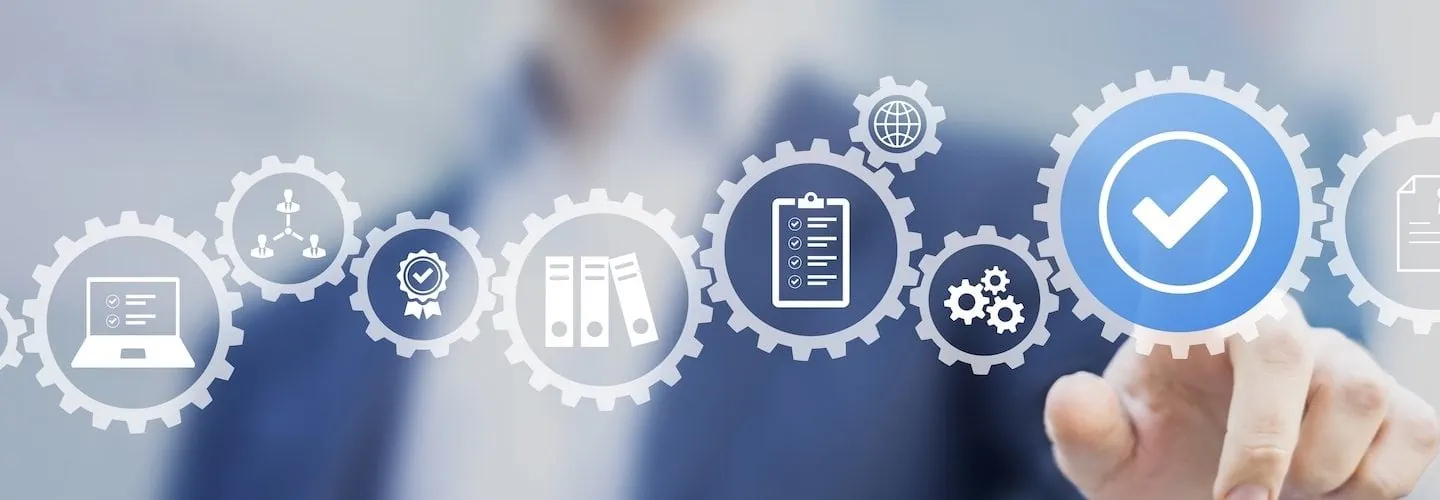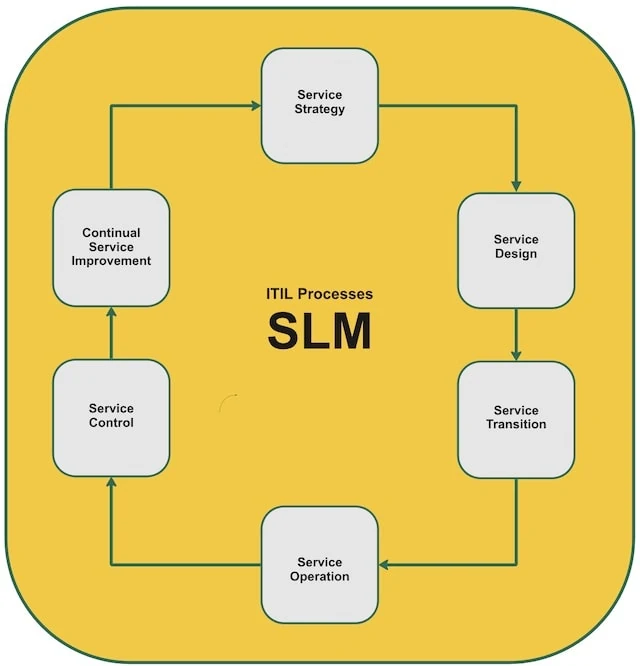

What is Service Level Management (SLM)?
As an ITIL process discipline, Service Level Management is a central component for the successful implementation of IT services within the framework of a Service Level Agreement (SLA). It defines all important IT services in the SLA and is also responsible for their implementation and adaptation to changing conditions. In addition, ongoing optimization under the aspects of cost efficiency and customer satisfaction, by including service KPIs, is also an important element
What is the purpose of service level management?
IT applications and associated services are constantly increasing in a world of digital transformation. This also increases the challenges for providers to deliver IT service management (ITSM) as efficiently as possible in accordance with customer agreements. The main task is to meet the demand for service quality. At the same time, value creation in the company should also be taken into account and positively shaped.
Without well-organized service level management, these requirements cannot be met with sufficient quality. Contractual penalties or even the loss of customers can be the consequence if SLA agreements are not met.
Service Level Management – increasingly important outside ITSM as well
Today, SLM is also a discipline in areas outside ITSM in order to manage the services agreed in the service level agreement in a structured and efficient manner.
Examples:
- Call Center/Customer Service
- Field Service Management
- Facility Management
- Logistics
- Telecommunications
- Personnel Services
- Marketing
- Other services
Agility in service level management means continuously recording the framework conditions for the agreed services, defining measures, and addressing adjustments at an early stag,e if necessary. Only in this way can the requirements of the customer and the company - at the same time - be successfully met.
The main objectives of Service Level Management
Service definition
The aim is to define the services with the customer, taking efficiency, the greatest possible operational reliability and service quality into account, and to document the services in an SLA.
Increase customer satisfaction
Customers are a company’s most valuable asset. Constant competition demands that customer satisfaction be the focus of corporate strategy. Evaluating customer feedback and incorporating the findings from day-to-day operations in an ongoing “Plan-Do-Check-Act” process and is, therefore, a central element in service level management.
Continuous optimization of value creation
The Service Value principle in ITIL encourages work with the customer to continuously optimize the agreed upon services and the associated processes for managing and delivering these. The value co-creation principle aims to establish value creation as a common goal for service providers and customers in order to make optimum use of resources.
Risk management
By defining the services and identifying the assets, risk analysis can be used to assess expenses and default risks accordingly. In addition, tasks on the customer and service provider sides should be prevented from being overlooked.
Constant monitoring of service quality makes it possible to identify weaknesses at an early stage and take countermeasures.
The aim is to use risk management to reduce the risk of failures for the customer and penalties for the service provider as far as possible and sensible.
Reporting
The ongoing measurement of KPIs in service level management is the central element for measuring the success of the services provided and the added value for the customer and the company. Reporting also serves to motivate employees and help identify problems at an early stage.
The most important contents in the SLM Report:
- Customer satisfaction/complaints
- Events and their causes
- Successful activities
- Availability and downtimes
- Service and response times
- Utilization of services
- Achieved/not achieved service levels
- Utilization of various resources
- Changes to SLAs
- New and changed services
- Activities to improve service quality
Allocation of tasks according to ITIL
The distribution of roles in the service level management process is often dynamic. Those responsible for the respective role can change or have different roles. One constant here is the service level manager. He is responsible for the execution, efficiency and quality of all processes. In addition, he is also responsible for the strategic development of the goals in SLM.
Service level manager tasks
The task of the Service Level Manager is to understand the customer’s business requirements and work with the customer to identify needed services and the most optimal usage of services to accomplish their business objectives. These are then translated into technical requireemtns and are defined in a service level agreement to record them in a binding way. The service level manager may negotiate several SLAs that are then organized into a service catalog that contains a complete list of all customer SLAs.
Other responsibilities include:
- Strategically develop and define objectives.
- Facilitate all necessary IT service management (ITSM) processes to meet the objectives agreed in the SLA.
- Define stakeholders and responsibilities in operational level agreements (OLAs) with the departments involved in the service.
- Manage contracts with third party providers (underpinning contracts).
- Establish service acceptance criteria (SAC) which ensures that IT functionality is ready to operate a new service.
- Provision KPI reports to enable evaluation of the services provided.
Service owner tasks
In the departments involved in the service, the service owner is the contact person for the service level manager. They ensure that the respective department complies with all OLA specifications.
Important ITIL processes in Service Level Management
ITIL processes have become an important and internationally established framework for implementing IT services in ITSM. The aim is to ensure service quality, efficiency and value creation within the company.
Service Strategy
- Define service requirements.
- Specify availabilities and all technical requirements.
- Set objectives for customer and service provider.
Service Design
- Provide the service catalog, based on the previously defined requirements.
- Continuously change and improvement existing services.
Service Transition
- Develop and revise services and their provisioning.
Service Operation
- Deliver, monitor and report on services in ITSM.
- Manage the problems and tasks in daily operations.
Continual Service Improvement
- Continuously optimize efficiency, customer satisfaction and profitability within the ITL service lifecycle.

How does service level management software help?
The requirements for service management in ITSM cannot be met without the support of service level management software.
OTRS is well prepared with its ITSM features to support you in service level management, including in such areas as:
- Asset Management with an integrated CMDB
- Knowledge Base
- Business process management (BPMS)
- Extensive reporting functions
- Predefined ITIL processes for ITSM
- Flexible service time and escalation management
Due to its diverse configuration options, OTRS can be perfectly adapted to your needs. Contact our experts for an initial consultation. Learn how OTRS will support service level management in your company.
Categories
- About OTRS Group (21)
- Automation (3)
- Corporate Security (26)
- Customer Service (30)
- Developing a Corporate Culture (12)
- Digital Transformation (54)
- General (86)
- ITSM (36)
- Leadership (22)
- OTRS in Action (8)
- Processes (5)
- Using OTRS (15)
